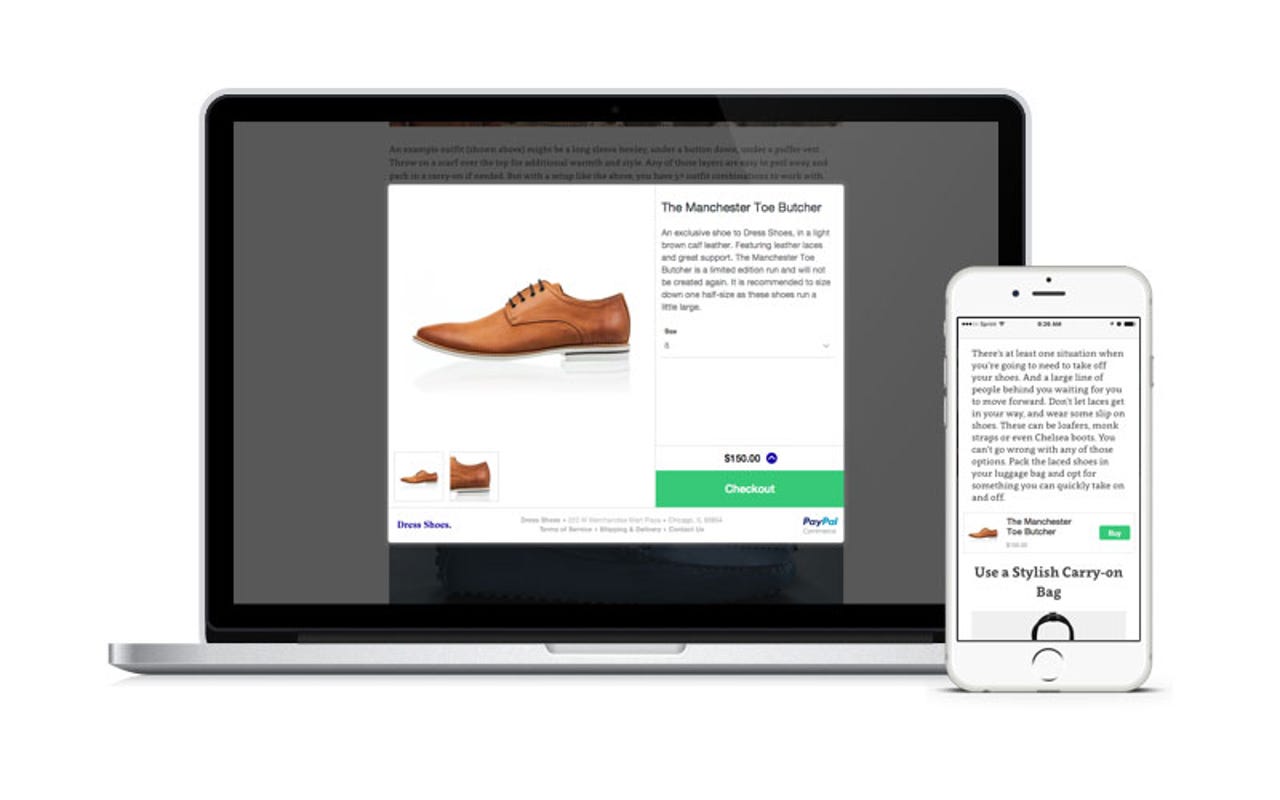PayPal Commerce aims to bring 'buy button' ubiquity to the web


Last summer, a newly independent PayPal bought a Chicago-based startup named Modest. The merged companies spent the next six months in what Modest co-founder Harper Reed describes as "fun and focused" product development.
Featured
And now they finally have something to show for it: PayPal Commerce.
Currently in closed beta, the new offering brings Modest's contextual commerce -- aka buy button -- technology to PayPal scale via a set of APIs.
Contextual commerce is sort of a fancy umbrella term for tools that encourage shoppers to make in-the-moment purchases on the Internet.
The way PayPal sees it (and a number of other tech players, for that matter), these purchases are much more likely to occur with the use of a buy button.
So with Modest's technology baked in, PayPal Commerce gives merchants drag-and-drop functionality to insert buy buttons into a bevy of consumer touchpoints including blogs, ads, emails and social media.
"PayPal Commerce is the infrastructure that will enable retailers to deliver open, distributed commerce experiences that only PayPal and Braintree together can deliver," Reed wrote in a blog post. "It provides services for partners to create a wide variety of contextual commerce experiences, and tools for retailers to reach and engage consumers beyond the boundaries of their web storefronts."
Interest in buy buttons has ballooned over the last year, with merchants and technology providers eager to experiment with how they can use the technology to increase conversion rates and online sales.
Facebook, Pinterest and Twitter have formed merchant and payment partnerships to start embedding buy buttons on their sites, while Braintree has inked a partnership with Pinterest to help process payments for the site's Buyable Pins feature.
But the technology is still relatively new, so it's unclear whether consumers will adopt the concept as enthusiastically as the tech world. Nevertheless, it will be interesting to see the degree of impact buy buttons have on e-commerce and consumer shopping habits. With PayPal's 179 million users worldwide, the potential is there for something big.
PayPal has yet to disclose any partnership or pricing details for PayPal Commerce, so for now it seems like the company is focused on building out the platform's performance and user base.